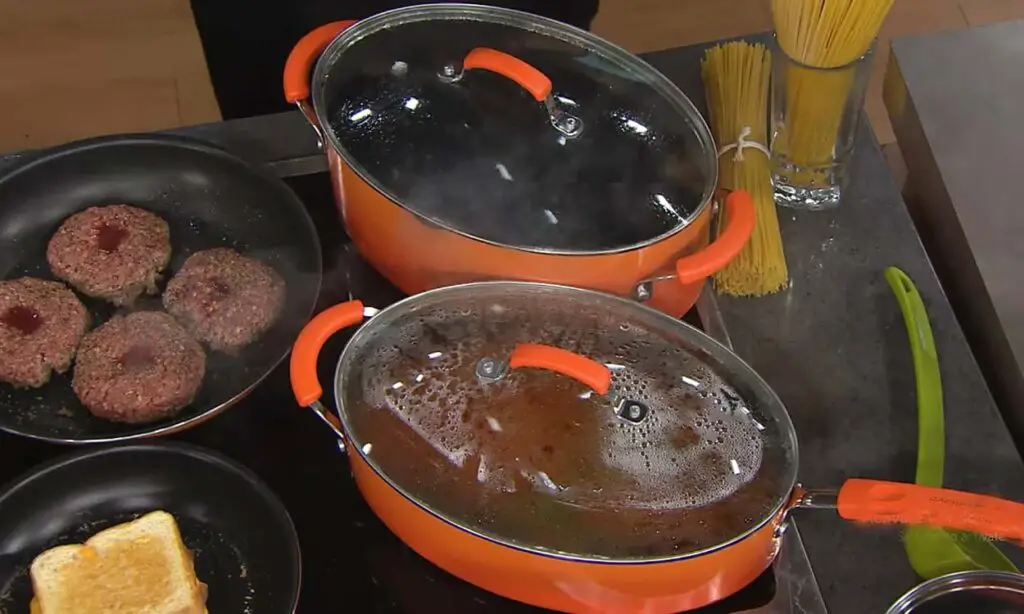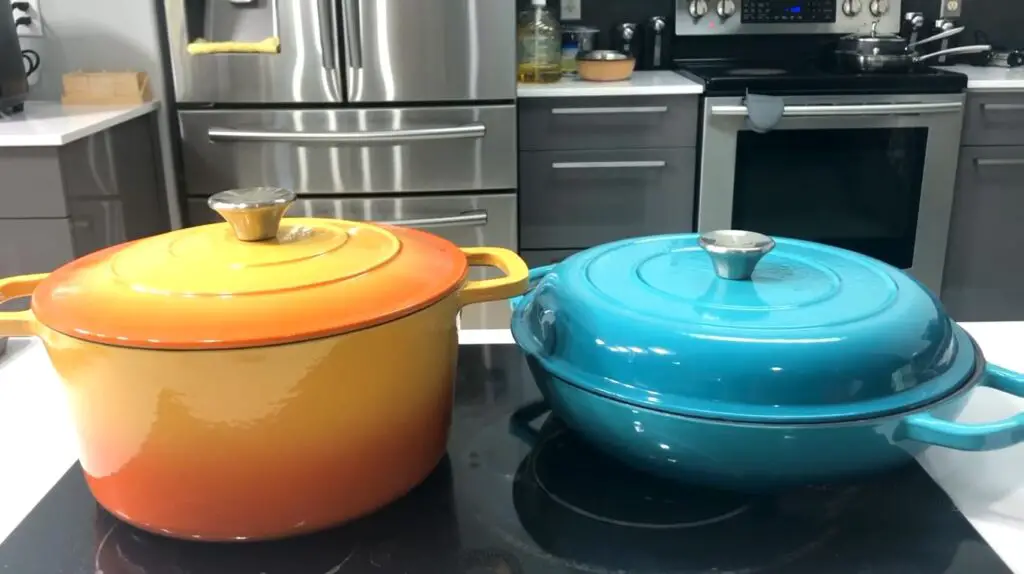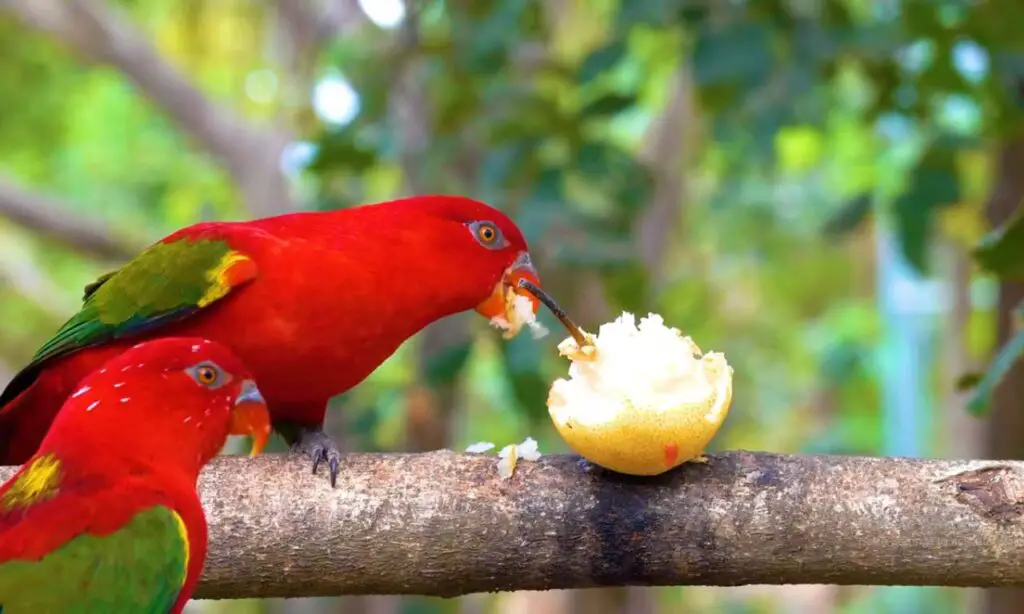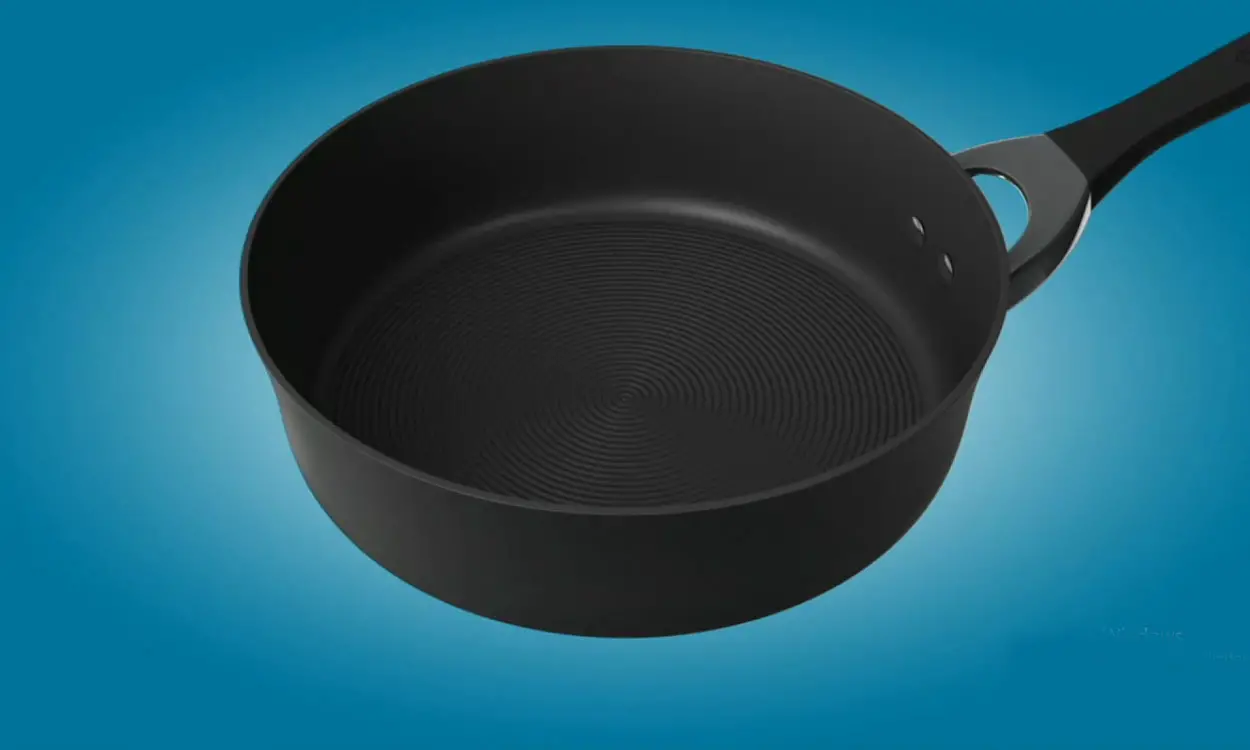Is Porcelain Enamel Cookware Safe for Birds? Everything You Need To Know
I was introduced to porcelain enamel cookware last year and loved it. In the realm of culinary delights, porcelain enamel cookware has been a popular option for many home chefs like me. Its vibrant colors, durability, and versatility make it a first choice in kitchens.
However, a critical question arises for bird enthusiasts like me in their homes: Is this porcelain enamel cookware safe for birds? After a lot of research, I found that, yes, porcelain enamel doesn’t pose any harm to the delicate bodies of the birds.
Still, the material is always likely to harm our feathered pets. What’s all the fuss about? Let’s find out!
What Actually Is Porcelain Enamel Cookware and What Does it Mean for Our Pet Birds?
Porcelain enamel cookware is basically crafted by coating a metal base, often cast iron or steel, with a layer of powdered glass. These are usually fused through high heat. The fusion results in a smooth, and glossy finish.
This method is effective, mainly because not only does it offer aesthetic appeal, but it also enhances the cookware’s performance. It’s also really impressive when it comes to equal heat distribution. It has non-stick properties as well as robust resistance to staining and scratching.
Essentially, these attributes make porcelain enamel cookware my favorite among other options. But are our birds sensitive to these components?
Birds, particularly pet birds that share our living spaces, are notoriously sensitive to various environmental factors. This includes the materials of almost all foreign substances they come into contact with, except for food.
The safe substances for humans might not necessarily be harmless to our feathered friends. For example, metals such as zinc, lead, and non-stick coatings are known to be potential hazards for birds.
The reason behind all of this is a bird’s bodily functionalities. Birds have a highly delicate respiratory system, making them more vulnerable to airborne toxins and particles.
Their smaller size and faster metabolism make them susceptible to substances that may not have a noticeable impact on larger animals, such as humans.

So, how can porcelain be harmful? Let’s get into that bit by bit. As you already know, porcelain enamel cookware is basically a metal core covered by a layer of glass. The composition of the enamel here involves various minerals and pigments that result in vibrant colors.
These components are carefully selected to facilitate both functionality and safety for us. However, the manufacturers don’t consider the impact of these components on birds.
As mentioned, the high firing temperatures effectively bind the enamel to the metal base during manufacturing. This creates a stable and durable coating.
Overall, this process reduces the chances of leaching or releasing harmful substances during regular cooking temperatures.
However, the release of harmful components may not be entirely zero. The interaction between this very little enamel toxin and avian digestive systems can be a matter of concern if the bird is in feeble health.
However, releasing toxins is possible only in case of prolonged cooking at high temperatures. In simple words, there is a chance that prolonged exposure to heat might lead to the release of trace elements that could be harmful to birds.
Apart from this, some birds are of naturally curious nature. For example, I have occasionally found my Conures pecking at surfaces around them.
Suppose they come into direct contact with damaged or chipped enamel. In that case, they might ingest particles that could potentially pose health risks.
Again, porcelain enamel is entirely safe for birds. Its negative influence in this regard is almost ignorable. However, if you are too concerned, you can always consider the available alternatives.
For example, some risk-free options are stainless steel, cast iron, and ceramic cookware.

How To Safely Use Porcelain Enamel Cookware Around Birds: My Pro Tips
Despite knowing what porcelain enamel can mean for my birds, I am not worried because I know the risks are potentially zero. However, I take no chances. This is why I maintain certain things while using porcelain enamel cookware to keep my birds safe. Here’s what I do:
1. Use Proper Ventilation: I ensure proper ventilation in the cooking area to prevent the accumulation of fumes. Good airflow helps disperse any potential airborne particles that may harm my birds. To facilitate the airflow, I have installed an exhaust fan to reduce the concentration of cooking-related vapors. Cooking near an open window also works.
2. Avoid High Heat: Cooking at excessively high temperatures can increase the risk of leaching. This is why I opt for medium to low heat settings while preparing my meals. This minimizes the risk of enamel component release and helps preserve the integrity of my elegant cookware.
3. Inspect Cookware for Chipping: I regularly inspect cookware for any signs of damage or chipping. This allows me to make sure whether or not my birds are at risk of consuming enamels. Even minor cracks or chips can provide entry points for harmful substances.
Therefore, if I find my porcelain cookware in perfect condition, I am relieved. But the one time I found slight chipping, I looked around to ensure I disposed of the chipped part.
4. Use Protective Cookware Liners: I really love using liners or parchment paper when cooking with porcelain enamel cookware. It really helps reduce potential toxic effects. These liners create a barrier between the food and the cookware’s surface, reducing the likelihood of direct contact and potential leaching.
5. Preheat with Care: I gradually increase the temperature rather than rapidly heating the cookware. Preheating porcelain enamel cookware this way helps minimize the stress put on the enamel coating.
In turn, it greatly reduces the risk of unintended chemical reactions, keeping your food and bird completely safe.
And that’s it. This is all I do to take proactive measures to ensure the safety of my birds while cooking on porcelain enamel cookware.

My Final Few Words
Apart from the aesthetic appeal, porcelain enamel cookware has many advantages for culinary enthusiasts. Although it doesn’t essentially pose any harm, there are some rare chances of a bird getting affected by this substance.
If you are serious about your bird’s health or your bird is in poor health condition, you don’t want to take any risks. You can always opt for an alternative cookware option. However, I, too, am a responsible bird owner and always make informed decisions.
After all the research and experiences, I still confidently use porcelain enamel cookware, and none of my birds have been affected. You’ll have the same result as me if you follow the ways I mentioned in this article.
